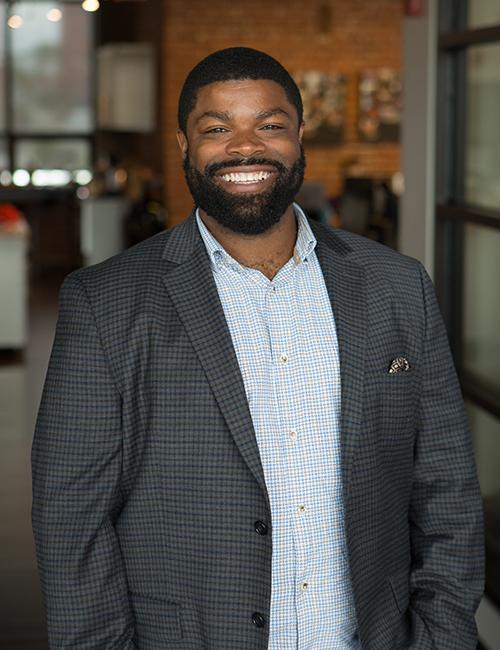With countless employers mandating a return to the office these days—even after promising this would not be the case—many companies are now starting to offer remote work as a perk for employees. After all, many see working from home as a great way to save money and skip long commutes into city centres. But many leaders in remote work conversations, like remote employee experience consultant and COO of Blend Me Kaleem Clarkson see things differently. Specifically, Clarkson sees remote work not as a perk but a necessary tool for placing people first in an organization. So, what does it mean to have a people first work from home model? And why is this important for reasons beyond talent acquisition?
We sat down for a conversation with Clarkson to find out the answers to these important questions. Here are some of the great insights he had to offer.
What Does It Mean to Have a People First Remote Work Model?
Last year, Clarkson was named a LinkedIn Top Voice in remote work. And this, we find, is only partially because of Blend Me’s dedication to remote work starting as far back as 2013. Perhaps more crucially, many have recognized Clarkson as being an early and prominent voice in remote work’s connection with worker advocacy.
That is, Clarkson sees hybrid and remote work models as not just a way of attracting talent or finding temporary solutions to a global pandemic. Instead, he focuses on the ways remote work models—specifically, people first remote work models—can allow individuals equitable working conditions.
This is because remote work better allows for individuals to find a personalized and equitable work-life integration (rather than a supposed work-life balance).
And we’re not just getting into semantics here. Putting people first in an organization means offering remote work so as to allow workers the freedom and autonomy to work and live in capacities that work best for them.
As Clarkson says, you can’t split a person down the middle. So, a people-first remote experience must involve offering individuals the freedom to integrate these parts of their lives more comprehensively. “A lot of people have that connotation of balance being equal,” Clarkson says, holding two flat palms up at an even height. He continues to say, “and with integration, we feel like it’s a bit more customizable.”
Remote Work Is Not Just a Fad
Having advocated for remote work for over ten years, now, Clarkson is one of the best in the business to tell us why remote is so important. He and his co-founder, the CEO of Blend Me, Jennifer Cameron, created their company to help others find better solutions while working and hiring remote. And crucially, they created the company with long-term remote models in mind—that is, not just as a temporary working solution, but one that outlasts certain conditions like pandemics.
The following are three crucial reasons you should be implementing a people first work from home model—that is, a remote work model that’s not just temporary or meant as a perk.
Facilitates More Mindful Communication during Working Hours
As much as communication can be a challenge when working remote—especially remote asynchronously—it can also actually be more well done when remote. This is because, as Clarkson recognizes, many companies are more mindful and intentional of communication when working remote.
When you’re working remote, he says, you have to pre-plan everything. This includes even casual conversations. And communication tends to be more succinct, to the point, and clear when organized and scheduled. So, realistically, when scheduled and given adequate time and resources, your communication can in fact improve when working from home.
Best Suits Diverse and Inclusive Team Practices
As Clarkson notes, according to their diversity report from last year, Facebook managed to not only meet but actually exceed all goals towards creating a more diverse team. And, quite pointedly, they did so in just one year. They did so in fact because the company decided to go fully remote in that one year.
However, as Clarkson has shown is a pattern in many workplaces these days, now, Facebook is mandating a return to the office. And the irony of the people behind the metaverse forcing workers to come to work in person is not lost on Clarkson. But crucially, Clarkson says this is a huge loss for the company’s diversity and inclusivity initiatives.
For people with disabilities, for example, working from home can greatly reduce exhaustion and frustration of having to navigate inaccessible spaces and pathways to the office, let alone the office spaces themselves. For lower-income individuals and their families, this means saving money on child care and commuting.
As well, for many people of colour, working from home can greatly reduce exhaustion caused by micro aggressions and code-switching in the workplace.
And perhaps more obviously but equally as crucially, as Clarkson notes, “utilizing remote work diversifies your applicant pool.” He continues to say that “If inclusion and diversity is being prioritized and is a main initiative at your company and you are not allowing remote work, you’re actually not supporting diversity. I don’t believe they can live separately.”
Allows for Healthy Employer-Employee Trust
These days, Clarkson says, “We’re seeing this struggle between employer and employees with returning to the office. It’s because most employees have had the opportunity to experience what autonomy is like.” And, as the Farmers Group Insurance case shows, taking away that autonomy and freedom can feel like a betrayal to this trust.
So, when establishing work from home models, make sure employees know from the very beginning what the circumstances of this policy is. Make sure you establish trust in your employees by offering them permanent work from home conditions and, importantly, not having to watch over their shoulder to ensure they’re still being productive.
Trust your employees will get their work done, and allow them to set their schedule to ensure they work at times that best suit their abilities. And in return, they will trust you and will feel more loyal to you in the long run.
Summary

Photo courtesy of Kaleem Clarkson
After meeting with remote employee experience consultant and COO of Blend Me Kaleem Clarkson, we conclude that remote work models should never be a temporary solution. Remote work models should instead be a permanent and people-first solution for optimizing communication, improving diversity, and offering freedom and autonomy to employees. For Clarkson, remote work is much more than just a “work perk”; it’s a comprehensive approach to resolving work-life balance challenges with a work-life integration solution.
Special thanks to Kaleem Clarkson for the expert advice in this article. For more information on people first work from home models and all that Clarkson and the rest of Blend Me team offer, check out www.blendmeinc.com.





